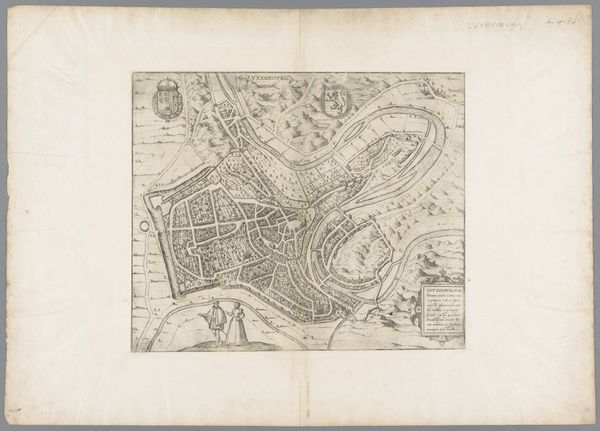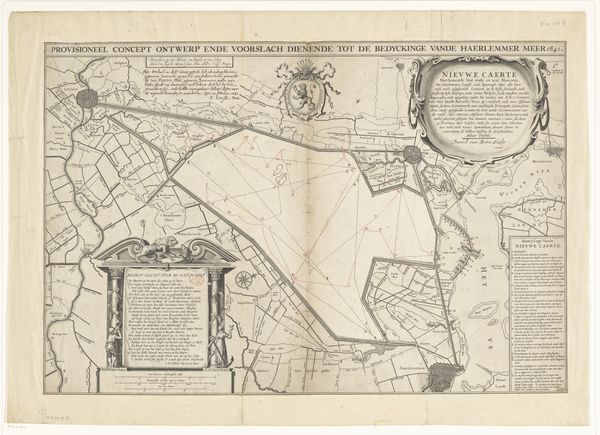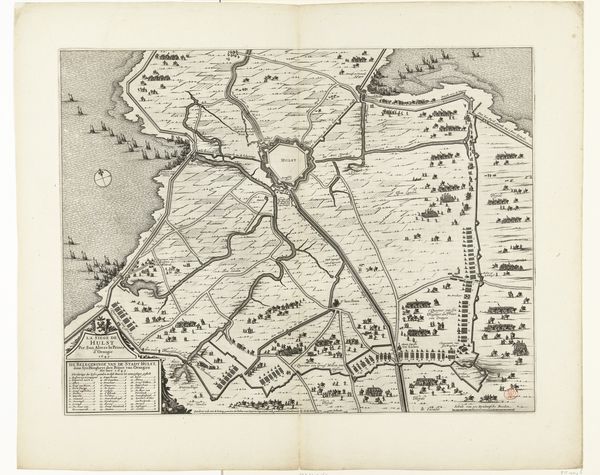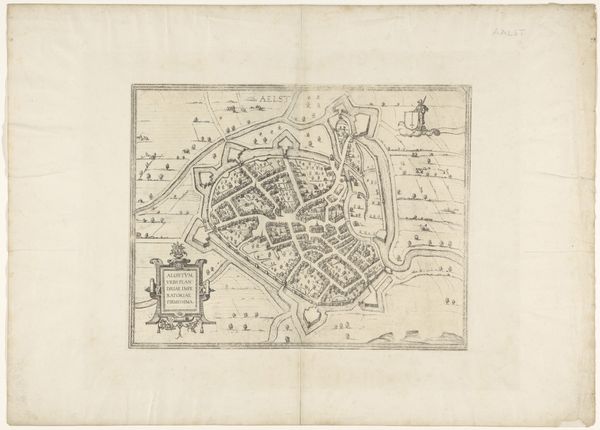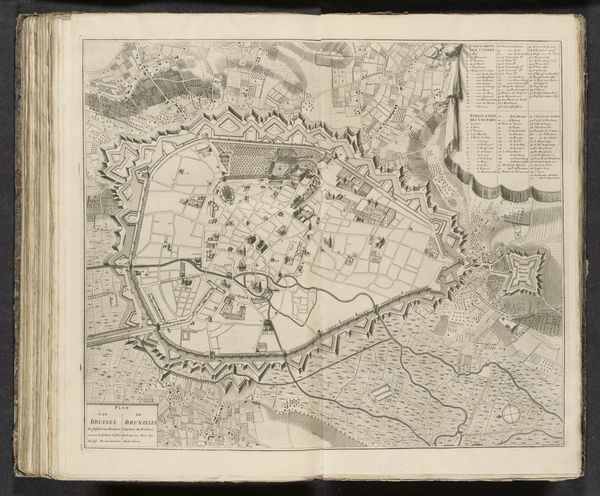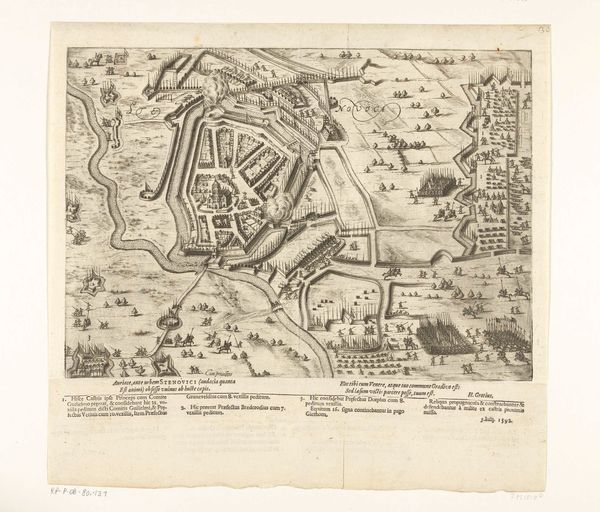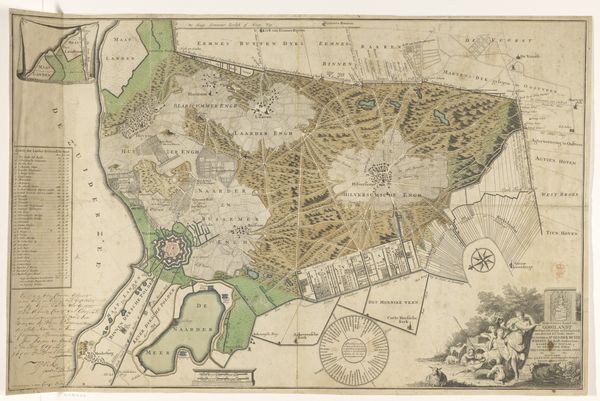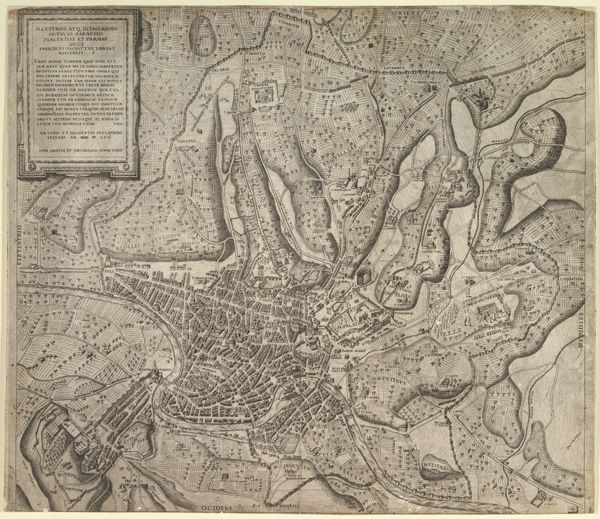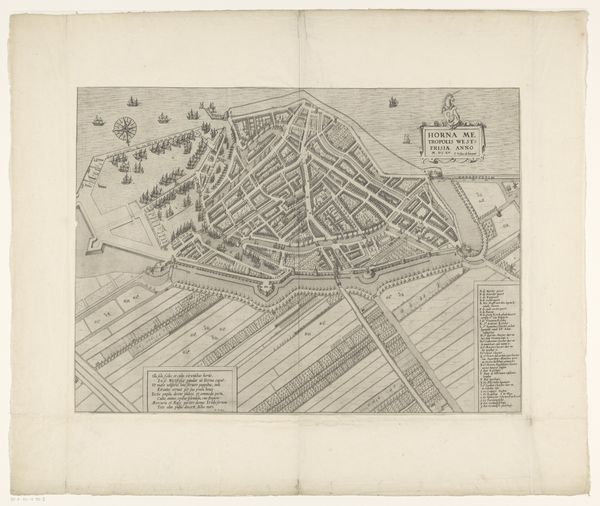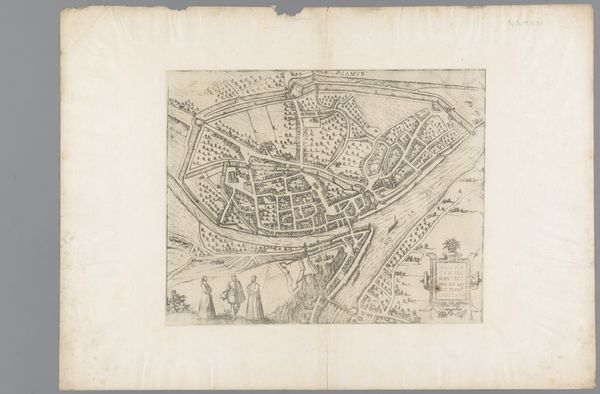
Plan of ancient Rome with a view of the Pantheon lower left and a triumphal arch lower right 1748
0:00
0:00
drawing, print, engraving
#
drawing
#
baroque
# print
#
ancient-mediterranean
#
cityscape
#
history-painting
#
engraving
Dimensions: 18 5/16 × 27 3/8 in. (46.5 × 69.5 cm)
Copyright: Public Domain
Editor: This is Carlo Nolli's "Plan of ancient Rome," created in 1748. It's an engraving, showcasing a detailed view of the city. I'm struck by the almost scientific precision of the mapmaking; it feels like it's trying to capture Rome in its entirety. What story does this map tell, beyond just geography? Curator: This map speaks volumes about Rome’s relationship with its past and the political project of urban planning in the 18th century. Notice how Nolli meticulously delineates not just streets, but also ancient ruins integrated within the contemporary cityscape. How does that juxtaposition of old and new speak to Rome's self-image at the time? Editor: I see it; the ruins are as prominent as the modern structures. It’s like the past is still very much present, dictating the shape of the city. Curator: Precisely! This wasn't simply about wayfinding; it was about power and legitimacy. By emphasizing Rome's antique grandeur, Nolli's plan bolstered the Church's authority, rooting it in a glorious historical narrative. Consider who the intended audience was for this map. Editor: Presumably wealthy Romans and visiting dignitaries? The detail suggests it wasn't meant for the average citizen. Curator: Exactly. It's a carefully crafted image intended to project an idea of Rome – as both a continuous historical entity and a modern center of power. What does the inclusion of architectural details, like the Pantheon and triumphal arches, at the bottom, signify in relation to the overall plan? Editor: They act almost like visual anchors, reinforcing the sense of Rome's enduring legacy that you mentioned earlier. I hadn't considered how deliberately the map constructs that image. Curator: And that is why the most unassuming pieces can hold complex ideas. By visualizing and ordering the city, Nolli’s plan also participates in a wider European movement of urban rationalization. Editor: That's a fantastic point! Seeing it as more than just a map really opens up new ways of understanding its purpose and the values it represents. Thanks! Curator: My pleasure! It's a testament to how art serves as a mirror reflecting the aspirations and power dynamics of its time.
Comments
No comments
Be the first to comment and join the conversation on the ultimate creative platform.
